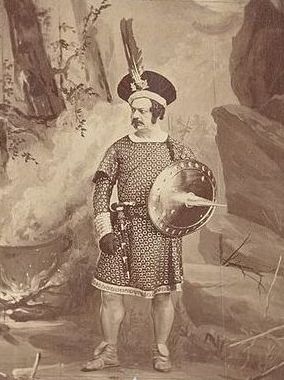Edwin Forrest as Macbeth
Unknown Photographer, before 1872
New York Public Library Digital Gallery
The Astor Place Riot remains one of the worst urban riots in American history — and a prime example of the legendary curse of “The Scottish Play.”
I couldn’t resist including the story of the riot in Haunt Me Still, especially after I discovered that the site of the old Astor Place Opera House is now occupied by a new condo building, complete with a Starbucks. Kate simply had to go there, though at first I had no idea how or why. I did, however, send some New Yorker friends scouting the streets of lower Manhattan for me. (Thanks, Eric, Bill, and Rene.)
A great read on the subject is Nigel Cliff’s The Shakespeare Riots: Revenge, Drama, and Death in Nineteenth-Century America (New York: Random House, 2007).








